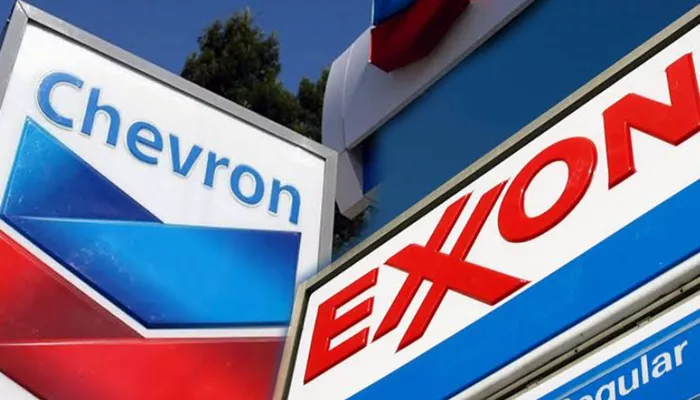A high-stakes arbitration panel in London has commenced hearings this week to resolve a fierce dispute between U.S. oil giants ExxonMobil and Chevron over control of a highly profitable offshore oil project in Guyana’s Stabroek block.
The Stabroek block, operated by ExxonMobil with a 45% stake alongside Hess Corp (30%) and China’s CNOOC (25%), holds an estimated 11 billion barrels of oil. Since production began just five years ago, the field has rapidly ramped up output to over 660,000 barrels per day (bpd) and is poised for significant expansion. Exxon projects that by 2030, gross production will reach 1.3 million bpd, potentially pushing Guyana into the ranks of the world’s top per-capita oil producers.
The current dispute centers on Chevron’s $53 billion bid announced in 2023 to acquire Hess Corp, which would grant Chevron control over Hess’s 30% stake in Stabroek alongside other assets like the Bakken shale in North Dakota. Exxon and CNOOC contest the transaction, invoking their contractual right of first refusal under the joint operating agreement (JOA) governing the block. Conversely, Hess and Chevron argue the JOA does not apply in the event of a corporate acquisition, prompting the disagreement to be referred to arbitration.
This legal showdown has frozen Chevron’s acquisition attempt for over 18 months, souring the once cooperative relationship between the industry titans. The three-judge arbitration panel, hearing closed-door sessions that began Monday, is expected to deliver a verdict within 90 days after concluding the hearings—potentially settling the issue by late summer.
While Chevron’s bid stalls, ExxonMobil has continued aggressive expansion, completing a $60 billion acquisition of Pioneer Natural Resources, strengthening its Permian Basin operations. Both companies maintain confidence in their legal positions, yet industry analysts highlight the immense risks for Chevron if it fails to secure the Guyana stake.
Chevron’s strategic urgency stems from a decade-long decline in its reserves replacement ratio, recently hitting its lowest point in over ten years. With reserves depleting faster than they are replenished, Chevron views the Guyana acquisition as critical to bolstering its portfolio with low-cost, high-yield assets. The Stabroek block’s breakeven price of approximately $30 per barrel ensures profitability even amid fluctuating oil prices.
In 2023, the consortium of ExxonMobil, Hess, and CNOOC recorded $6.33 billion in net profits from Guyana operations, with Hess’s share totaling $1.88 billion before recent production ramp-ups. The block’s joint ventures boast an impressive 56% net margin—surpassing even technology giants like Nvidia. Industry forecasts from Wood Mackenzie estimate that these partners could collectively reap up to $182 billion in revenues over the next 15 years.
“Guyana represents one of the most coveted oil projects worldwide,” said Luiz Hayum, a Wood Mackenzie analyst. “It was developed at an unprecedented pace and delivers comparatively low-emissions oil at a highly competitive break-even cost, making it extraordinarily lucrative.”
As the arbitration panel prepares to weigh contractual nuances and corporate rights, the verdict will carry profound implications not only for Exxon and Chevron but also for the future dynamics of global oil production in a rapidly evolving energy landscape.


